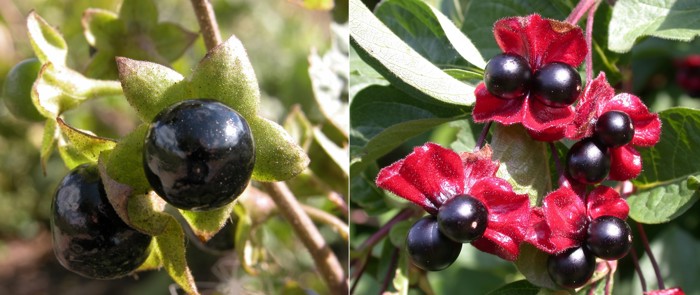Deadly nightshade is rare in Norway. According to the species database, there have only been a few confirmed findings in Østfold and Telemark. The likelihood of your child eating this plant is therefore small.
Differences between the plants
In short, we can say that the main differences between these two plants are as follows:
- Twinberry honeysuckle has reddish subtending leaves and the berries/flowers grow in pairs.
- Deadly nightshade only produces berries singly, with five-pointed foliage behind.
Deadly nightshade is not used as a hedge plant
- Deadly nightshade is a herbaceous plant and does not have the typical "stick-like" stems with bark that are seen on shrubs, such as twinberry honeysuckle.
- Deadly nightshade has greener/green-like, relatively soft stalks.
- Deadly nightshade is not used as a hedge plant in Norway, as it cannot grow very tall under Norwegian conditions. Deadly nightshades is only rarely found in beds. When it does stray, it has probably spread from old gardens. It is very unlikely that deadly nightshade is planted in public facilities or parks.
- On the other hand, twinberry honeysuckle (Lonicera involucrata), which is a harmless plant, is frequently used as a decorative bush and hedge plant in public spaces and by housing associations and in private gardens.
Deadly nightshade - typical characteristics
- Brown or brown-purple bell-shaped flowers (with four yellow stamens inside).
- Large berries: 1.5-2 cm in diameter (the size of a small cherry), which is green first and then turns glistening black.
- The berries have a green, five-lobed (sometimes with shading) "foot", which looks like a star. The brown-purple, bell-shaped flowers disappear when the berry emerges and are not visible at the same time as the berry. Note that, because the berries mature at different rates, there may still be both flowers and berries present on the bush at the same time, as shown in the image below.
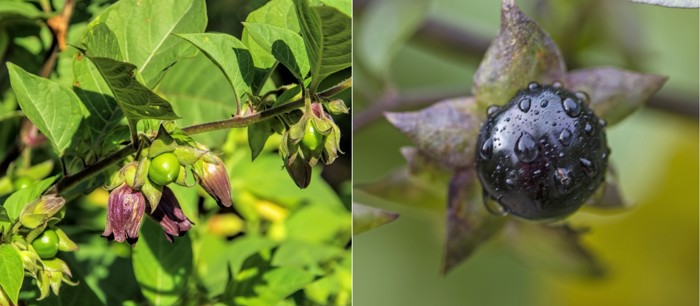
Image of flowers and berries on deadly nightshade. Deadly nightshade berries grow singly where the flower was previously located.
Illustration: Mostphotos.com
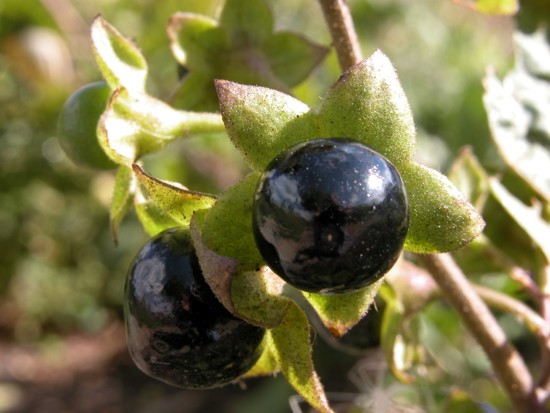
Belladonnaurt
Belladonnaurt er en svært giftig plante. Selv små mengder kan føre til alvorlige forgiftninger. Ring 113 ved alvorlige symptomer.
Illustration: biopix.dk
Twinberry honeysuckle - typical characteristics
- Yellow flowers with red-purple subtending leaves just below the yellow flower.
- The yellow flowers often occur in pairs, which means that the berries are often produced in pairs too.
- Medium-sized berries: 0.8-1.2 cm in diameter, glistening black.
- Often tall and wide (being up to 2.5 m and just as wide), unlike deadly nightshade, which normally reaches a height of no more than 120 cm (probably less than this too because of the Norwegian climate).
- Black glistening berries occur in the position where the yellow flowers were previously located. The vivid, reddish-purple subtending leaves are still suspended from the stalk beneath the berries. It is this that is characteristic of the plant, and can help to distinguish twinberry honeysuckle from deadly nightshade.
- The bush flowers on both last year’s shoots and older shoots, with the result that both flowers and fruit are present through the late summer and autumn.
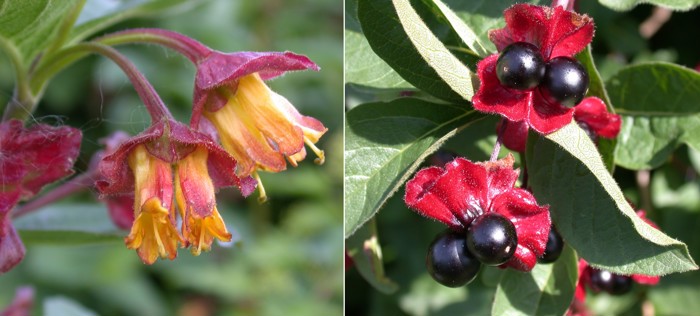
The picture on the left shows the yellow flowers of twinberry honeysuckle. The picture on the right shows berries from twinberry honeysuckle. These often grow in pairs.
Illustration: Jeanette Brun/NMBU
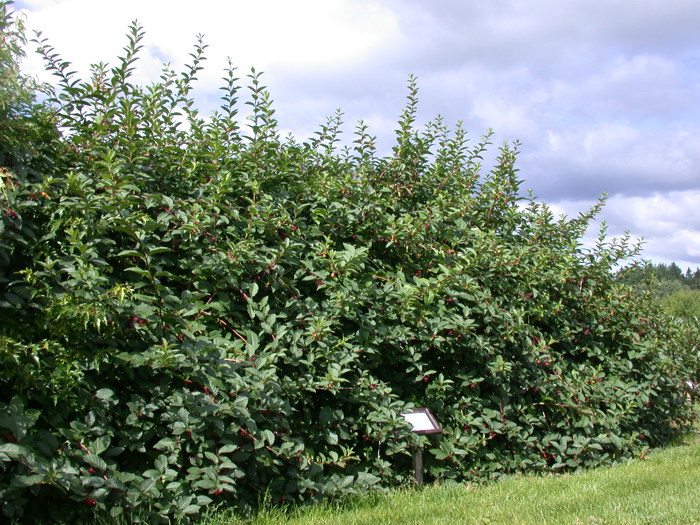
Twinberry honeysuckle often grows tall and wide.
Illustration: Jeanette Brun/NMBU
